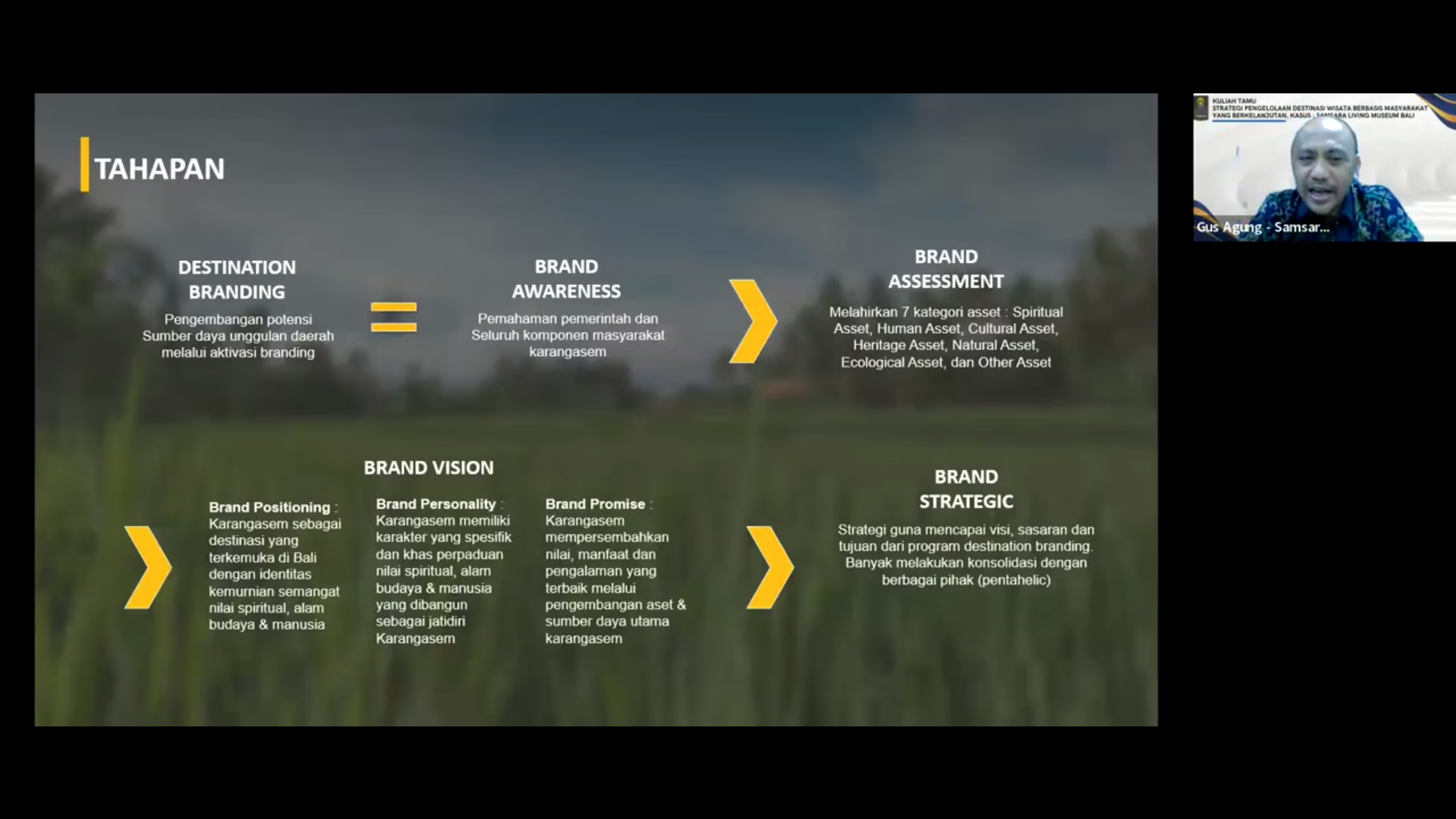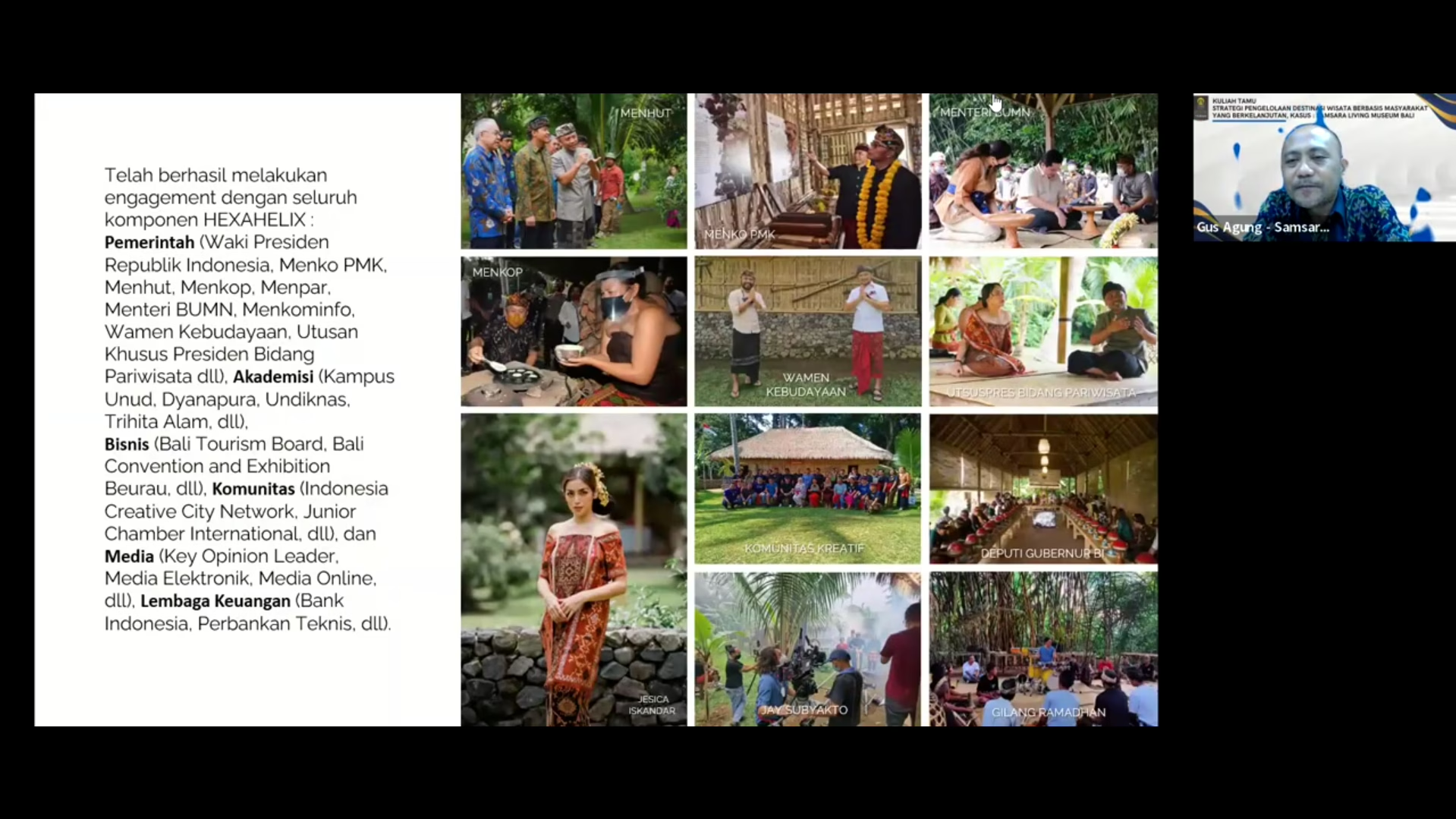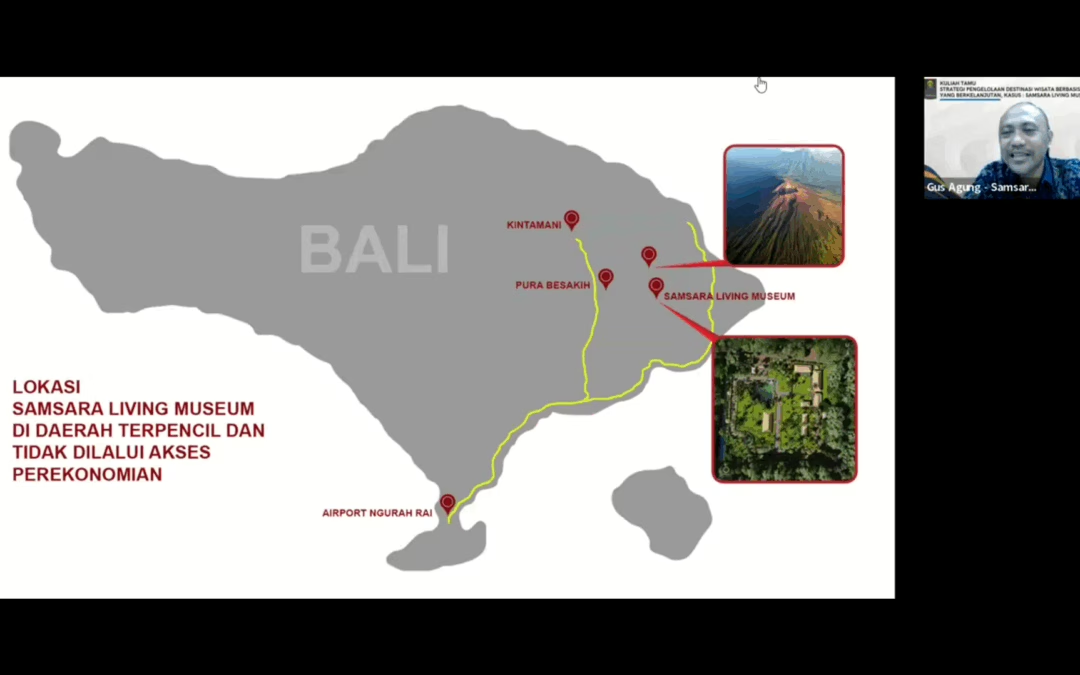Depok-The Tourism Business Management study program, Vocational Education Program, Universitas Indonesia (UI), held a guest lecture by presenting Ida Bagus Gunarthawa—or often called Gus Agung—, Co-Founder of Samsara Living Museum Bali on March 7, 2025. Gus Agung shared his experience in implementing tourism destination management strategies by raising a case study of the development of Samsara Living Museum in Karangasem, Bali.
Samsara Museum is a living museum located in Jungutan Village, Karangasem Regency, Bali. Samsara Museum provides a space for visitors to enjoy and feel the beauty and richness of cultural values inherited from the ancestors. Visitors who come to the museum will gain valuable experience and knowledge about various rituals in the life cycle of Balinese society.
 (Photo: Gus Agung explains the stages in developing the potential of tourism destinations)
(Photo: Gus Agung explains the stages in developing the potential of tourism destinations)
Gus Agung said, “The Samsara Museum is not just an ordinary tourist destination, but a prototype for developing cultural-based potential in a region with various challenges. Bali itself has long made culture the foundation of tourism. So, we want local and international tourists to get an interesting experience through this museum.”
A number of museum management strategies have also been carried out based on sustainable communities, starting from consolidation with various stakeholders, collaboration with the surrounding community to develop potential local job opportunities, and creating interesting content on social media. “We continue to strive to develop tourism destinations sustainably in order to improve the welfare of local communities, preserve culture and the environment, and collaborate with other parties for sustainable development,” added Gus Agung.
 (Photo: Gus Agung provides a number of examples of activities that the Samsara Museum has carried out in developing tourism destinations)
(Photo: Gus Agung provides a number of examples of activities that the Samsara Museum has carried out in developing tourism destinations)
Head of the Tourism Business Management Study Program, Anisatul Auliya, S.ST.Par., M.Par., said that learning related to sustainable tourism destination management can be utilized well by students and is in accordance with the Sustainable Development Goals (SDGs). Starting from making museums a center for cultural education (SDGs 4: Quality Education); involving local residents as part of museums and tourism-based work skills training (SDGs 8: Decent Work and Economic Growth); to encouraging the involvement of women, the elderly, and vulnerable groups in tourism activities (SDGs 10: Reduced Inequalities). “We continue to strive to invite students to learn about the utilization of tourist destinations and how to manage them not only to seek profit, but also to utilize various things so that sustainable tourism can be implemented properly,” concluded Auliya.


